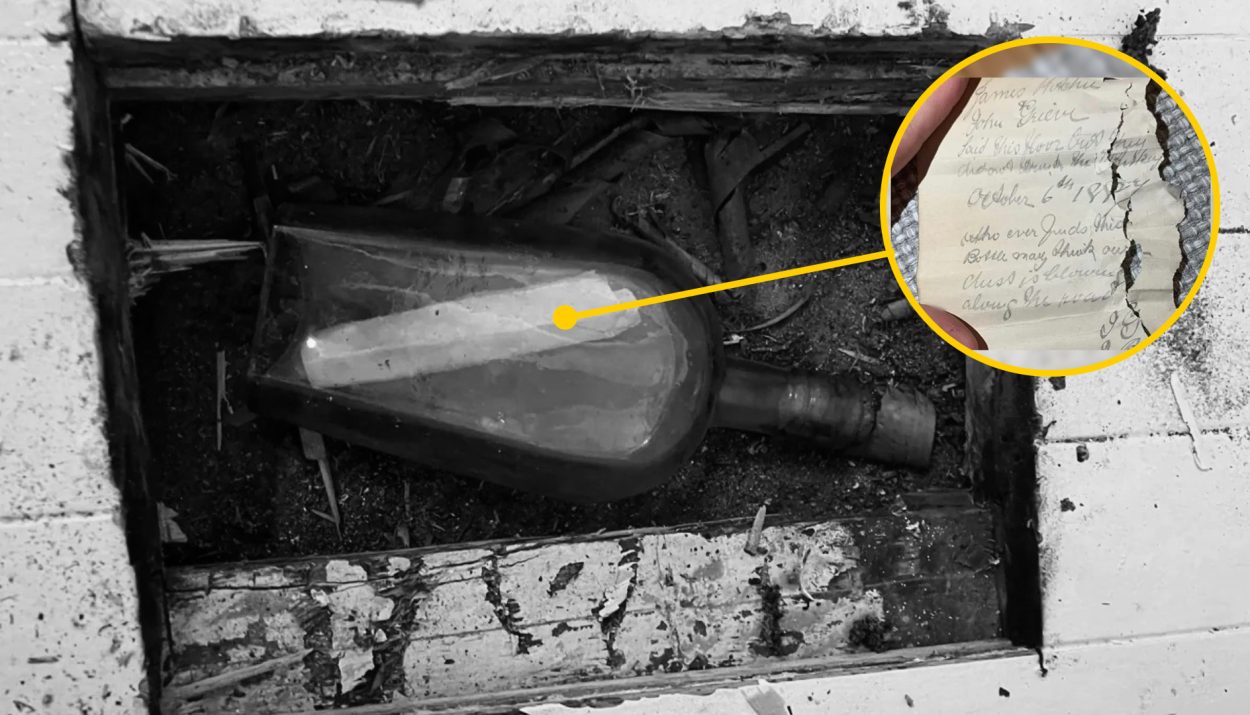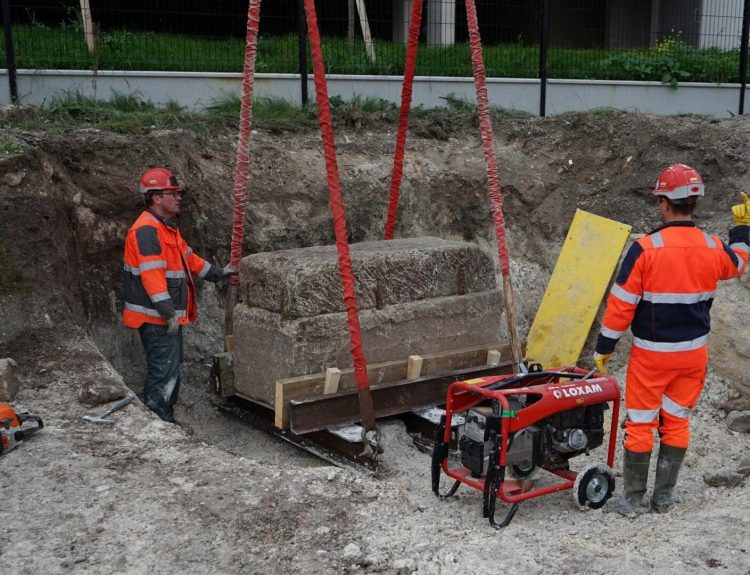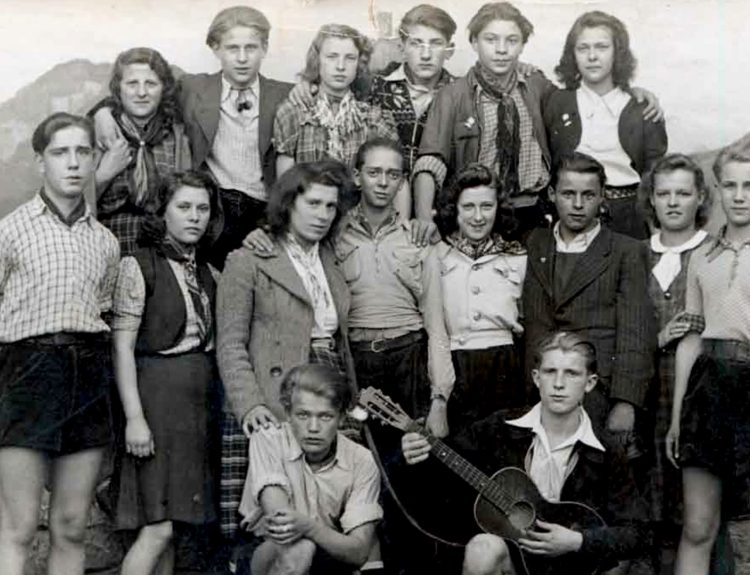When Eilidh Stimpson hired a plumber to do some work on her home in Edinburgh, Scotland, she never anticipated that the day would end in excitement, shattered glass, and a journey into the past.
Beneath the floorboards of Stimpson’s home in the city’s Morningside neighborhood, the plumber, Peter Allen, chanced upon a remarkable and unexpected find … an intact bottle. The bottle did not contain bootlegged whiskey or a cache of coins. Instead, it was a poignant reminder about fleeting time and our own mortality.
Some Basic Home Improvements
Eilidh Stimpson’s house, like many in the UK, is a few centuries old and uses heating pipes and a radiator for heat. Stimpson and her husband wanted to relocate the radiator from one wall to another, so they called in a local plumber to do the pipe work.
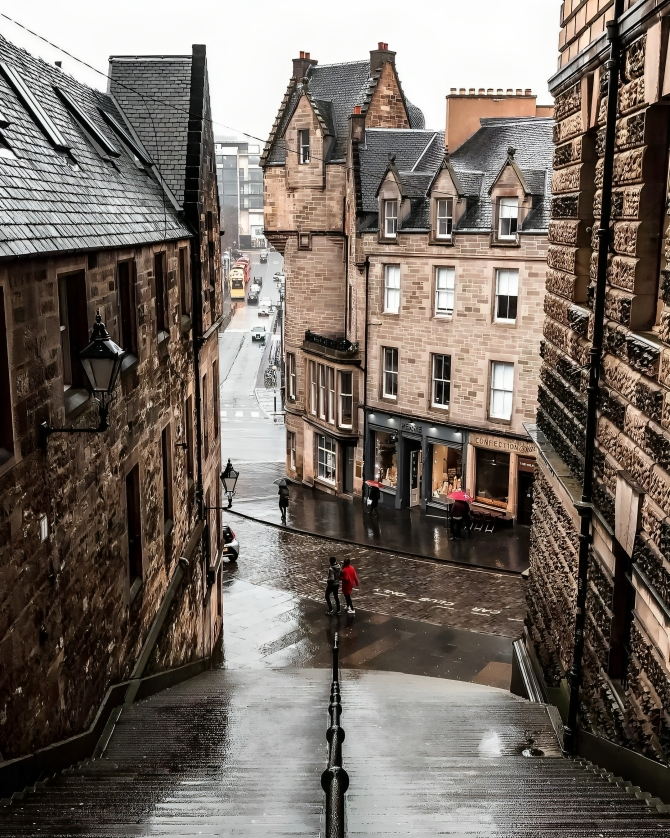
As anyone who has lived in an older home knows, projects are never as easy as you think they will be. When the plumber, Peter Allen, made his first cut into the flooring, he realized that the current floor had been laid on top of an older floor. This was going to be a bigger project than initially thought.
A Lucky Cut
In the room, which measures ten-feet by fifteen-feet, Allen cut deeper into the other layer of flooring and made a few random cuts in his attempt to locate the heating pipes. Then he pulled up the floorboards and planned to reroute the pipes. But he got sidetracked.
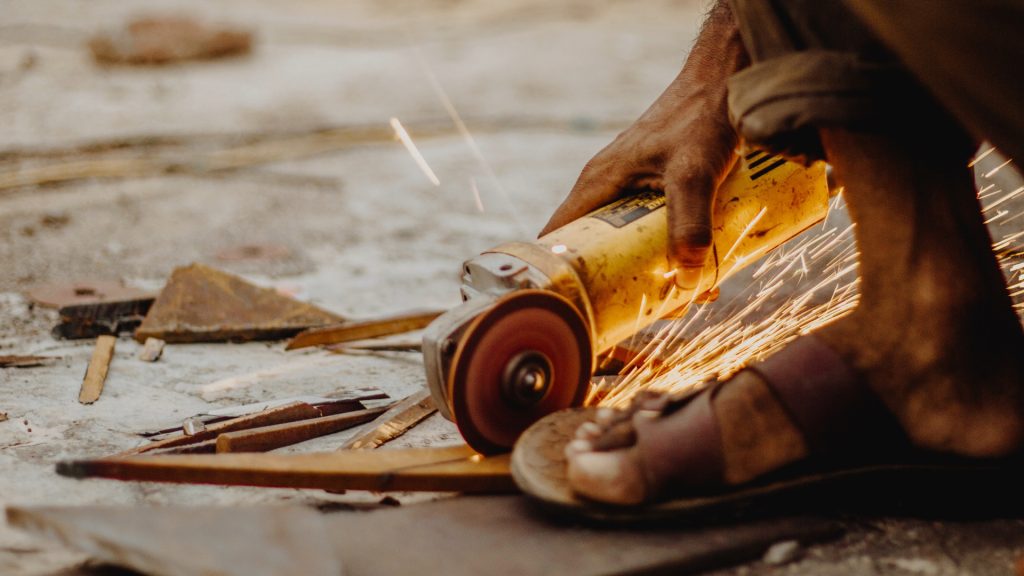
Under the floorboards, Allen spotted an old, dusty bottle. Amazingly, his exploratory cuts just missed the bottle. He explained, “I cut exactly around the bottle without knowing it was there. I can’t quite believe it.”
“Look What I Just Found!”
Allen immediately set aside his plumbing tools and removed the bottle from its hiding spot. As Stimpson recalled, “He came down the stairs going, ‘look at what I just found in the hole I just made!’.”
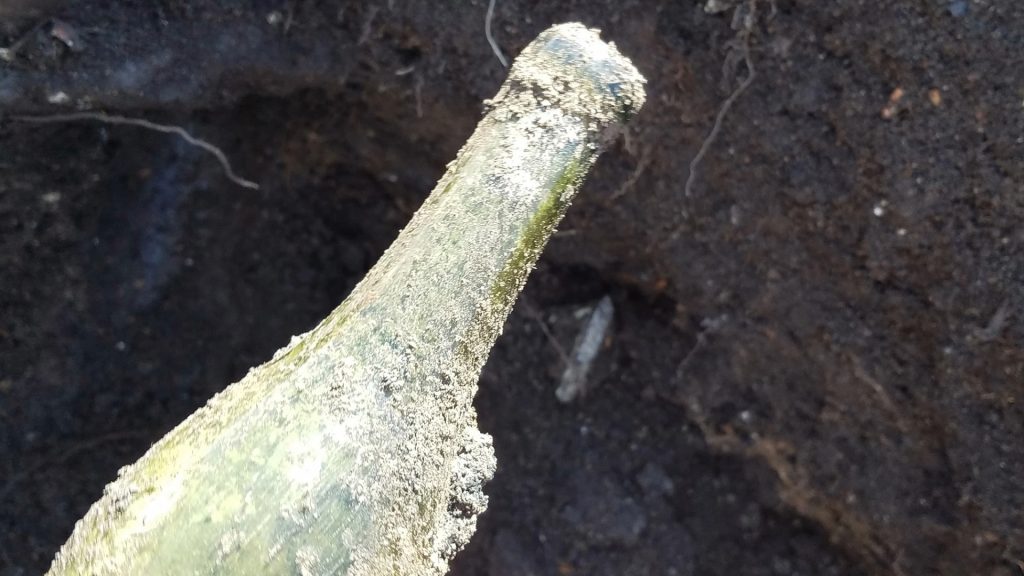
Allen was quite excited as he told Stimpson about the unexpected discovery. They could tell that the bottle once held whiskey, but there was no longer any liquid inside. Instead, there was a piece of paper that had been rolled and inserted into the glass bottle.
A History Lesson for the Kids
Although Eilidh Stimpson was eager to read the message in the bottle, she knew her children, ages eight and ten, would want to be present when the bottle’s contents were read. She waited until the children returned home after school before she uncorked the bottle.

She explained, “When I picked them up from school, I said, ‘I’ve got the most exciting thing to tell you’ – to which they asked, ‘are we having hot dogs for tea?'” When she shared the discovery with them, she said, “They were super-excited.”
A Difficult Sacrifice
Stimpson and her youngsters waited until Stimpson’s husband arrived home from work before the family attempted to remove the paper from the bottle. It turned out to be a trickier task than they thought. The rolled paper had unfurled enough that it was trapped behind the neck of the bottle.
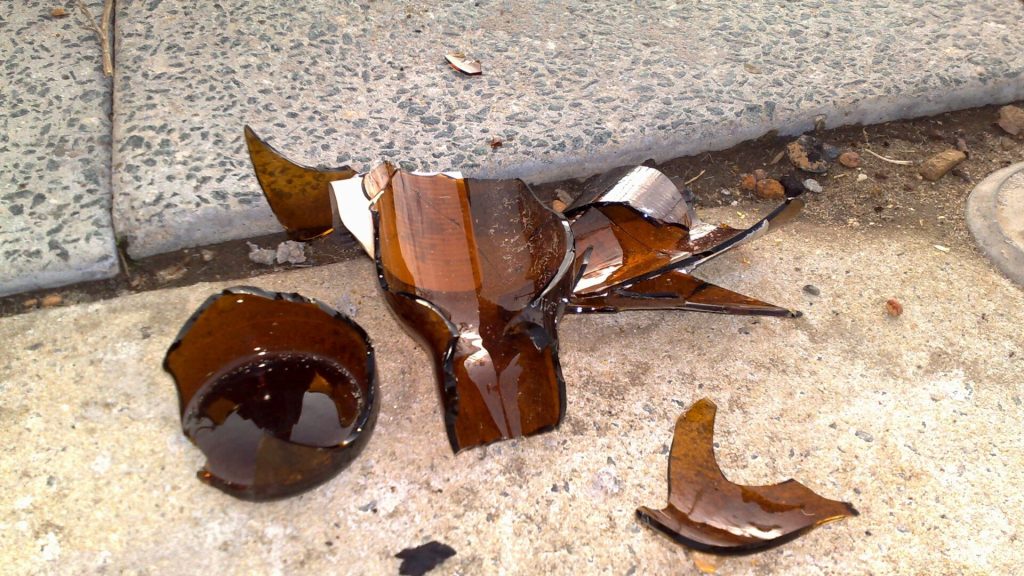
The family then tried to use tweezers to grasp the paper and pull it out. The old paper, however, was so fragile that the tweezers ripped it. The family agreed that in order to retrieve the paper, they would have to sacrifice the bottle. Only when the glass was smashed could they get to the message.
A Message Across Time
The note inside the hidden bottle was dated … October 6, 1887! It had laid undisturbed for 136 years. The letter was written by the two workers who laid the original floor in the room, James Ritchie and John Grieve. And it served as a time capsule of sorts.
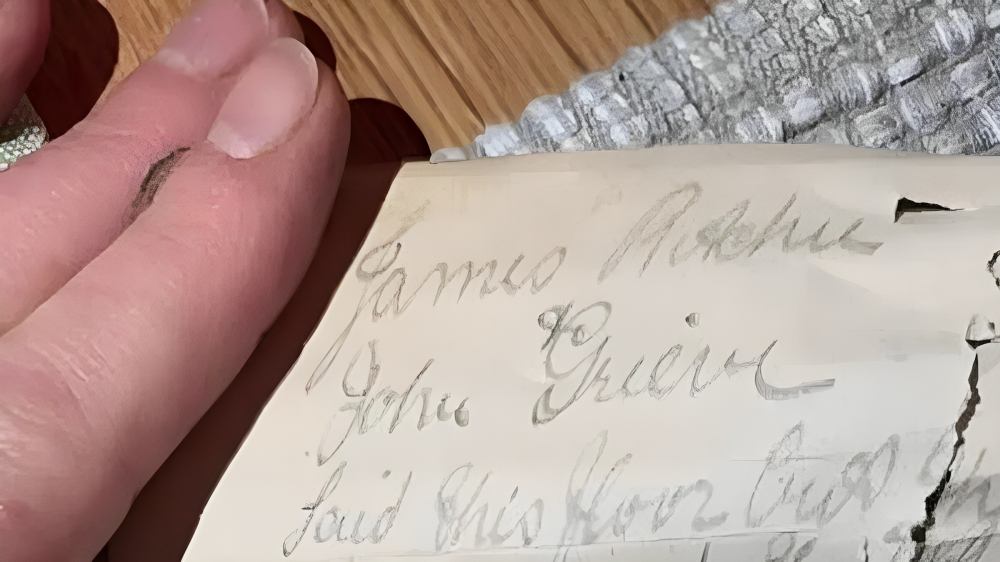
The message read: “James Ritchie and John Grieve laid this floor, but they did not drink the whisky. October 6th, 1887. Who ever finds this bottle may think our dust is blowing along the road.” A poignant message indeed!
Bottles Were a Safe, Secure Container to Store Messages
Historically, people have hidden messages in bottles as a means of communication, often with the hope that their missives would be discovered by someone else, either in a distant location or at a later time. The practice dates back centuries. Because glass bottles are airtight and watertight, they serve as excellent containers for messages written on paper.
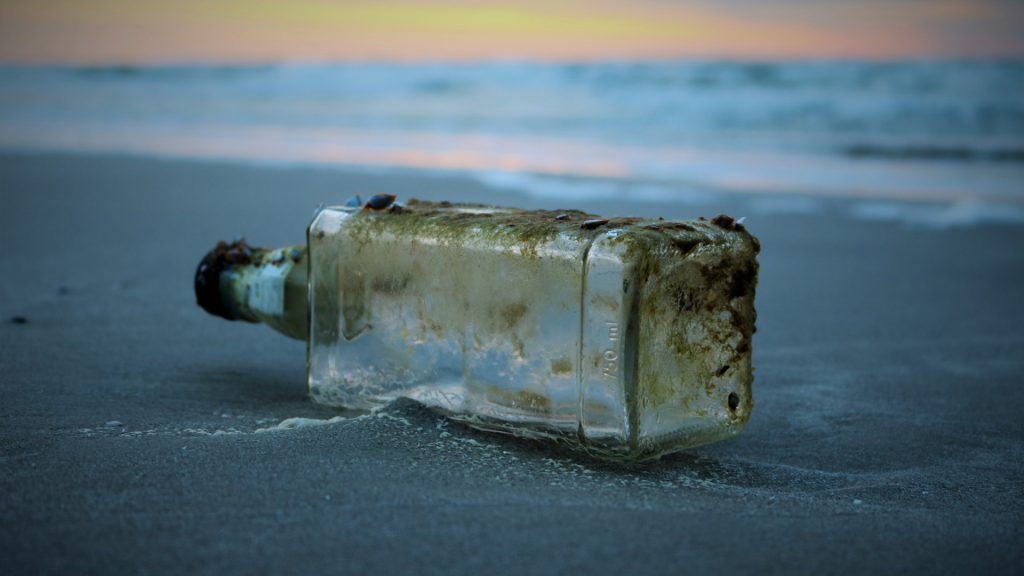
Most often, messages in bottles are associated with mariners stranded at sea using message-filled bottles as a desperate plea for help, providing details about their location and the circumstances they faced. However, sailors and travelers often left messages in bottles as a form of record-keeping, documenting their voyages, experiences, or a moment in time.
A Research Project
Eilidh Stimpson and her family were understandably curious about the authors of the message. Eilidh enlisted the help of a friend to dig into the past. They found records that two men named James Ritchie and John Grieves had lived in nearby Newington in the 1880s.

Further research into the history of the Stimpson home offered more clues. It was learned that the room in which the bottle was found was built to be the bedchamber of a maid or servant of the home. For the Stimpson children, it was an educational experience. “My eight-year-old is actually learning about the Victorians right now, which is great,” she said.
Fleeting Time
The message that James Ritchie and John Grieves wrote in 1887 is a reminder of the continuous march of time. The men understood that they would be long gone by the time anyone recovered the bottle and read their words, but that people in the future might be interested in their moment in time.
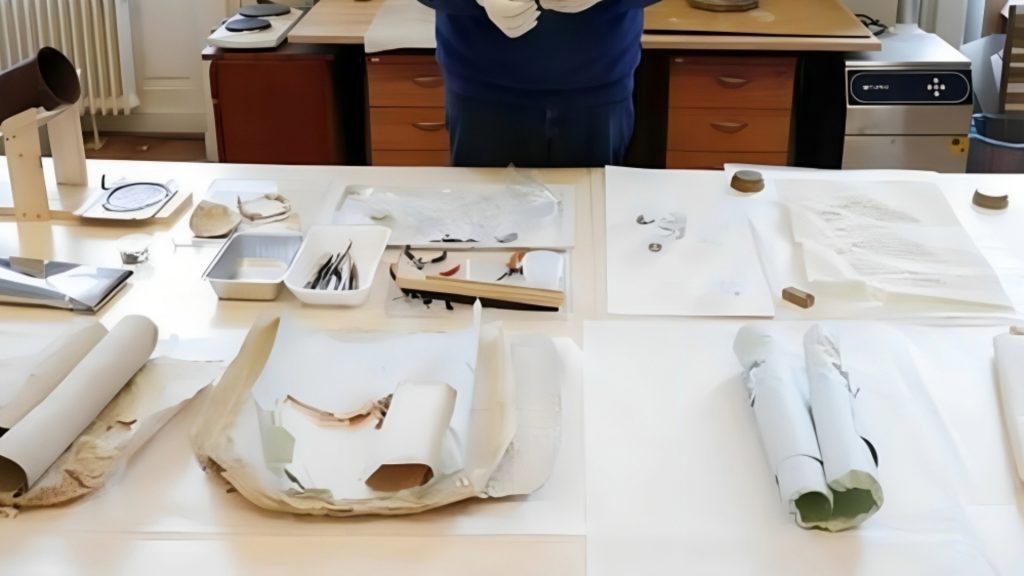
Eilidh Stimpson has preserved the old note to remember the past, but she, too, is eying the future. “Now, I’m thinking we need to replace it with a message of our own for future generations to discover,” she said. “If you place one for the next person, who knows how it would be discovered and the information shared. What a lovely time frame from the past.”

